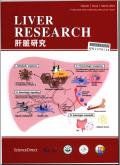Sequential ultrasound molecular imaging for noninvasive identification and assessment of non-alcoholic steatohepatitis in mouse models
IF 2.1
Q2 Medicine
引用次数: 0
Abstract
Background and objective
Noninvasive non-alcoholic steatohepatitis (NASH) assessment is a clinical challenge to the management of non-alcoholic fatty liver disease. We aim to develop diagnostic models based on sequential ultrasound molecular imaging (USMI) for the noninvasive identification of NASH in mouse models.
Methods
Animal experiments were approved by the Animal Ethics Committee of South China Agricultural University. Forty-nine C57BL/6 mice were divided into normal control, non-alcoholic fatty liver, NASH, and hepatitis groups. Sequential USMI was implemented using CD36-targeted microbubbles (MBs-CD36) and intercellular adhesion molecule-1 (ICAM-1)-targeted microbubbles (MBs-ICAM-1) to visualize hepatic steatosis and inflammation. The targeting signal of USMI was quantified as the normalized intensity difference (NID) with the destruction-replenishment method. Correlation analysis was conducted between the NID-MBs-CD36 and pathological steatosis score and between the NID-MBs-ICAM-1 and pathological inflammation score. Finally, diagnostic models combining NID-MBs-CD36 with NID-MBs-ICAM-1 were established for NASH diagnosis.
Results
MBs-CD36 and MBs-ICAM-1 were successfully prepared and used for sequential USMI in all mice. NID-MBs-CD36 values increased with the progression of steatosis, while NID-MBs-ICAM-1 values increased in parallel with the progression of inflammation. A strong positive correlation was identified between NID-MBs-CD36 and pathological steatosis grade (rs = 0.9078, P < 0.0001) and between NID-MBs-ICAM-1 and pathological inflammation grade (rs = 0.9071, P < 0.0001). Among various sequential USMI-based diagnostic models, the serial testing model showed high diagnostic performance in detecting NASH, with 95% sensitivity, 97% specificity, 95% positive predictive values, 97% negative predictive values, and 96% accuracy.
Conclusions
Sequential USMI using MBs-CD36 and MBs-ICAM-1 allows noninvasive grading of hepatic steatosis and inflammation. Sequential USMI-based diagnostic models hold great potential in the noninvasive identification of NASH.
序列超声分子成像用于小鼠模型非酒精性脂肪性肝炎的无创鉴定和评估
背景与目的无创非酒精性脂肪性肝炎(NASH)评估是对非酒精性脂肪性肝病治疗的临床挑战。我们的目标是建立基于序列超声分子成像(USMI)的诊断模型,用于小鼠NASH模型的无创识别。方法动物实验经华南农业大学动物伦理委员会批准。49只C57BL/6小鼠分为正常对照组、非酒精性脂肪肝组、NASH组和肝炎组。序贯USMI使用靶向cd36的微泡(MBs-CD36)和靶向细胞间粘附分子-1 (ICAM-1)的微泡(MBs-ICAM-1)来观察肝脏脂肪变性和炎症。用破坏-补充法将USMI的目标信号量化为归一化强度差(NID)。对NID-MBs-CD36与病理性脂肪变性评分、NID-MBs-ICAM-1与病理性炎症评分进行相关性分析。最后,建立NID-MBs-CD36与NID-MBs-ICAM-1联合诊断NASH的模型。结果成功制备了smbs - cd36和MBs-ICAM-1,并用于所有小鼠的序贯USMI。NID-MBs-CD36值随着脂肪变性的进展而增加,而NID-MBs-ICAM-1值随着炎症的进展而平行增加。NID-MBs-CD36与病理性脂肪变性分级呈正相关(rs = 0.9078, P <;0.0001), NID-MBs-ICAM-1与病理性炎症分级之间存在差异(rs = 0.9071, P <;0.0001)。在各种基于序列usmi的诊断模型中,序列检测模型在检测NASH方面表现出较高的诊断性能,灵敏度为95%,特异性为97%,阳性预测值为95%,阴性预测值为97%,准确率为96%。结论:使用MBs-CD36和MBs-ICAM-1进行序贯USMI可以对肝脏脂肪变性和炎症进行无创分级。基于序列usmi的诊断模型在NASH的无创诊断中具有很大的潜力。
本文章由计算机程序翻译,如有差异,请以英文原文为准。
求助全文
约1分钟内获得全文
求助全文

 求助内容:
求助内容: 应助结果提醒方式:
应助结果提醒方式:


